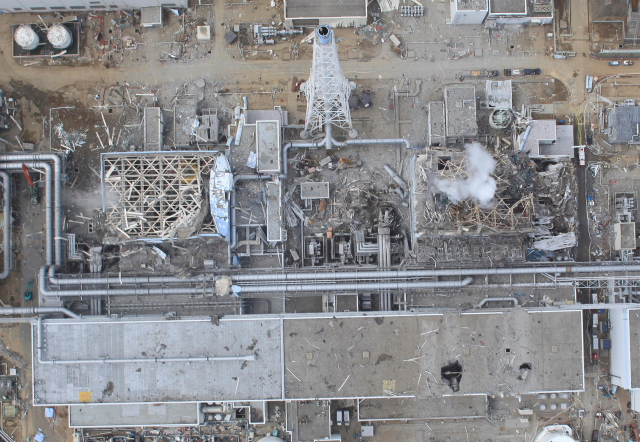[The two year anniversary of the Fukushima nuclear disaster is March 11. Little has changed from this 2011 article (except cleanup costs may be higher at $250 billion). Generations of Japanese taxpayers will have to cover those costs. Other countries also have liability caps which means the public provides ‘free insurance’ to the industry. As this article shows it’d be cheaper to give interest-free loans to solar or wind industry. — Stephen.]
“…it is basically insanity to shoulder the public with risk to get relatively small amount of electricity…”
By Stephen Leahy
UXBRIDGE, Canada, May 6, 2011 (IPS)
The nuclear energy industry only exists thanks to what insurance experts call the “mother of all subsidies”, and the public is largely unaware that every nuclear power plant in the world has a strict cap on how much the industry might have to pay out in case of an accident.
In Canada, this liability cap is an astonishingly low 75 million dollars. In India, it is 110 million dollars and in Britain 220 million dollars. If there is an accident, governments – i.e. the public – are on the hook for all costs exceeding those caps.
Japan has a higher liability cap of 1.2 billion dollars, but that is not nearly enough for the estimated 25 to 150 billion dollars in decommissioning and liability costs for what is still an ongoing disaster at its Fukushima Daiichi nuclear plant. Seven weeks after the tsunami caused the disaster, radiation levels continued to spike higher.
No one knows when the reactors will finally be in cold shutdown, or when the costs of the Fukushima disaster will stop piling up. One report suggests decommissioning will take 30 years.
This independent environmental journalism depends on public support. Click here learn more.
Japan’s credit rating was downgraded because of the accident, noted Mycle Schneider, a Paris-based energy and nuclear policy analyst who has worked in Japan. “The Japanese know it’s just a matter of time before another large earthquake occurs,” Schneider told IPS.
“Japan will never build another nuclear plant.”
Continue reading


